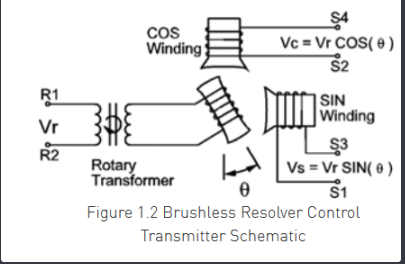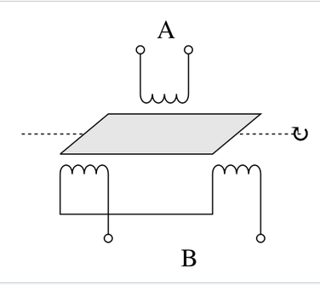I am not an EE. Most resolvers I come across have 6-wires:
I have even come across 5-wire resolvers. Could we get this down to 4 wires?
For example, an RVDT (Rotary Variable Differential Transformer) requires only 4 wires: 2 for the primary coil, 2 for the secondary coils if they are wired in series.
Of course, with RVDTs, the secondary coils run parallel to each other.
What if the secondary coils were wired in series, where the secondary coils were perpendicular to each other like in a resolver?
Could I still determine the angle of the rotor?



